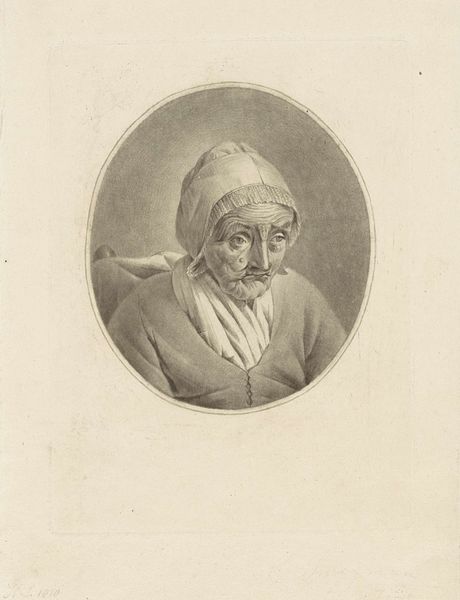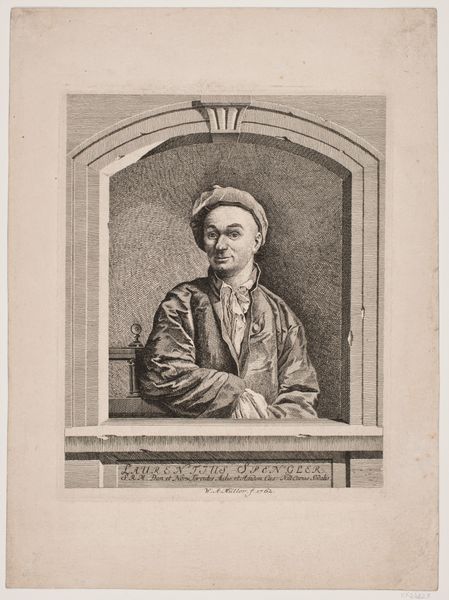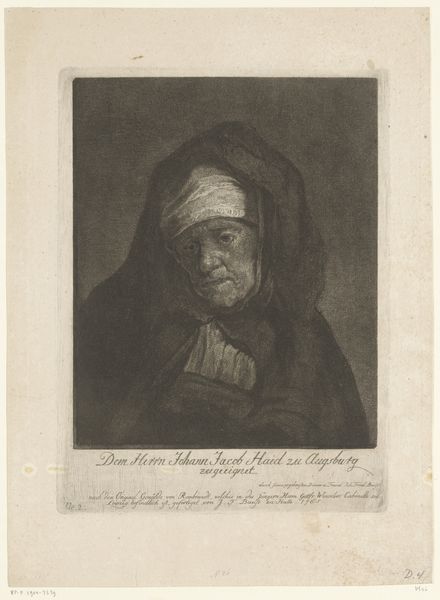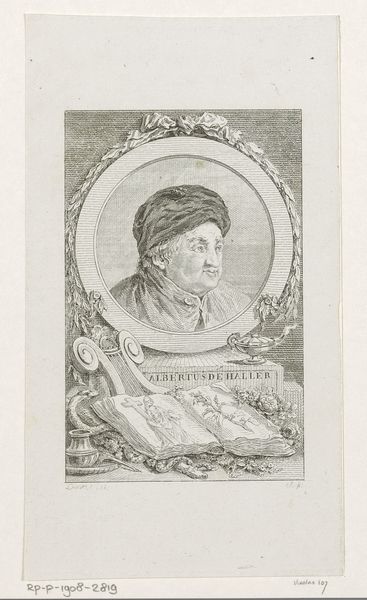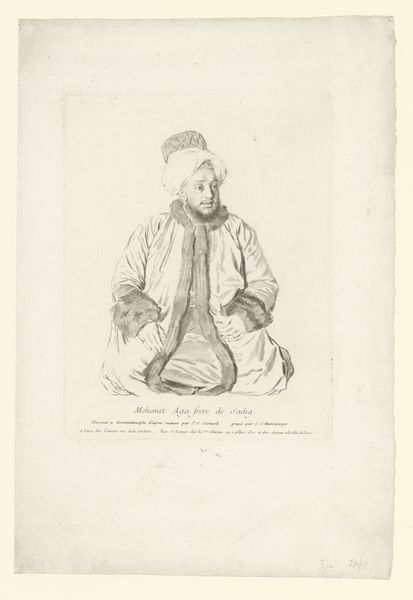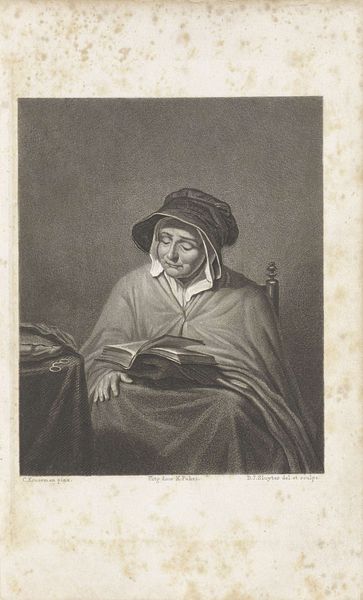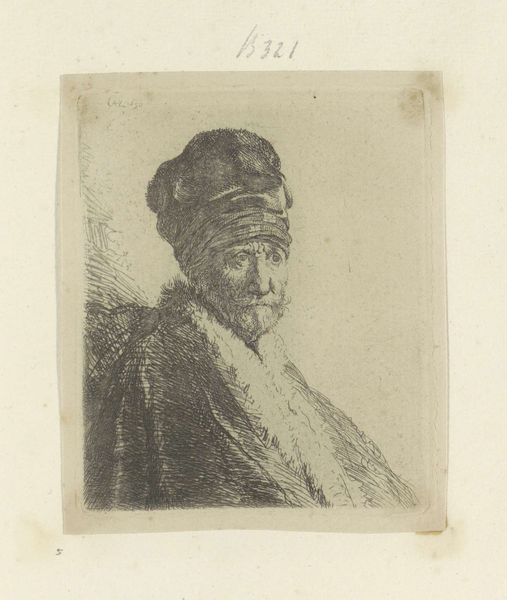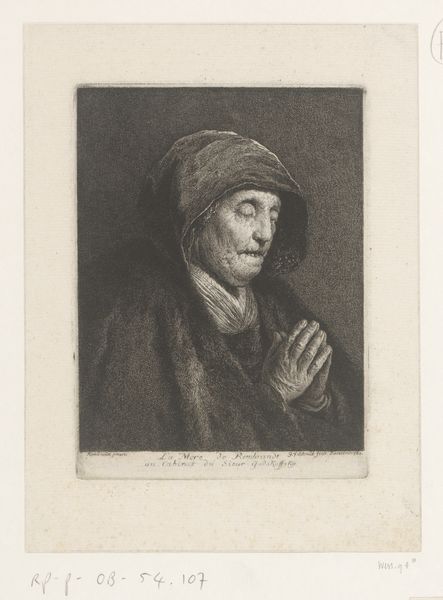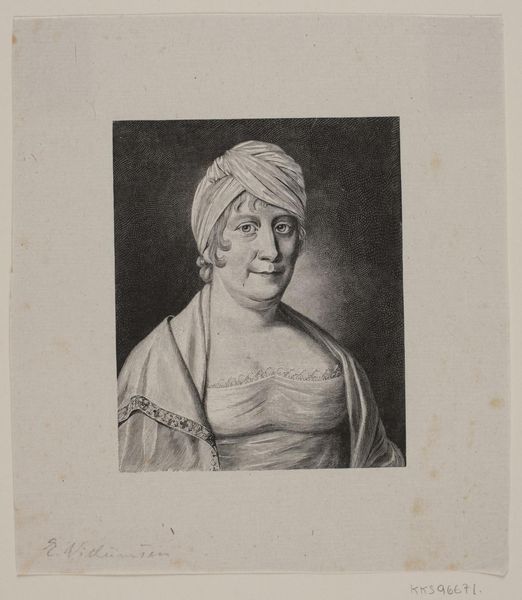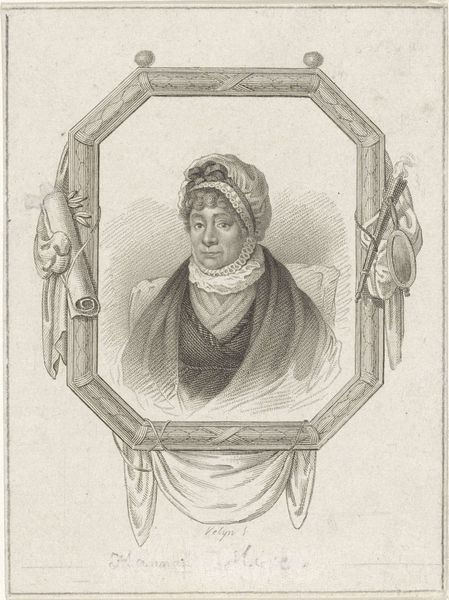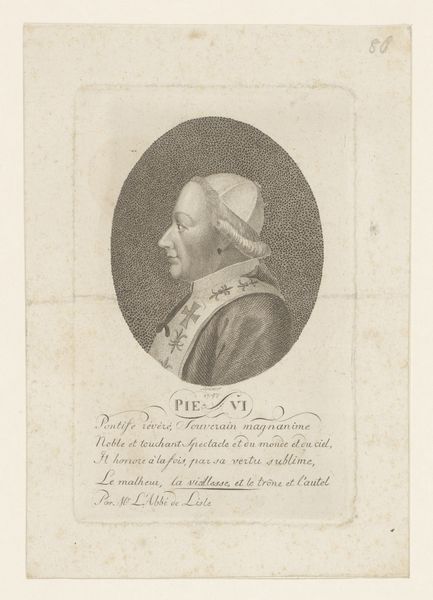
engraving
#
portrait
#
neoclacissism
#
old engraving style
#
history-painting
#
engraving
#
realism
Dimensions: height 256 mm, width 168 mm
Copyright: Rijks Museum: Open Domain
Curator: Here we have Hermanus van Brussel’s engraving, “Portret van Albertje Kuyskens,” created around 1800 to 1802. Editor: What strikes me immediately is the austerity of the piece. The monochrome engraving lends a sense of solemnity, focusing intensely on the subject’s advanced age. Curator: Yes, and notice the realism, even bordering on unflinching portrayal, rendered with considerable technical skill. Van Brussel uses line and tonal variation to sculpt the form and detail. The portrait adheres to Neoclassical principles while rooted in Dutch traditions of portraiture. The ovoid frame isolates her against a barely-there backdrop, almost like a study. Editor: From a historical perspective, I wonder about Albertje Kuyskens herself. Was she a figure of public importance or a private individual? The meticulous detail in her face suggests someone the artist knew personally, maybe someone from the artist’s close surroundings; the way he has handled the hands is beautiful, too. How did social conventions impact portraiture? This was clearly intended to record and perhaps commemorate her, but also fits neatly within societal constraints of the era. Curator: Interesting points. Let's look more deeply into the composition. Observe how Van Brussel employs varied cross-hatching. There’s a stark contrast between textures—from the soft, enveloping fabrics to the minute crinkles etched on her face—almost as if recording the very passage of time. And look closely at the contrast between her brightly lit face and the dark recesses behind. Editor: Contextually, such images played a role in shaping societal views of age, gender, and even class. This image prompts conversations about who is deemed worthy of remembrance and the political subtexts inherent to representation. Considering its historical context opens new windows into the work’s reception in its day, and its present value as a cultural artifact. Curator: Indeed. Considering formal attributes next to such intricate histories provides a richer interpretation of this detailed, affecting artwork. It also underscores its lasting importance. Editor: Absolutely. This engraving is a window into not just a life, but an era of cultural beliefs about art, portraiture, and society at large.
Comments
No comments
Be the first to comment and join the conversation on the ultimate creative platform.
